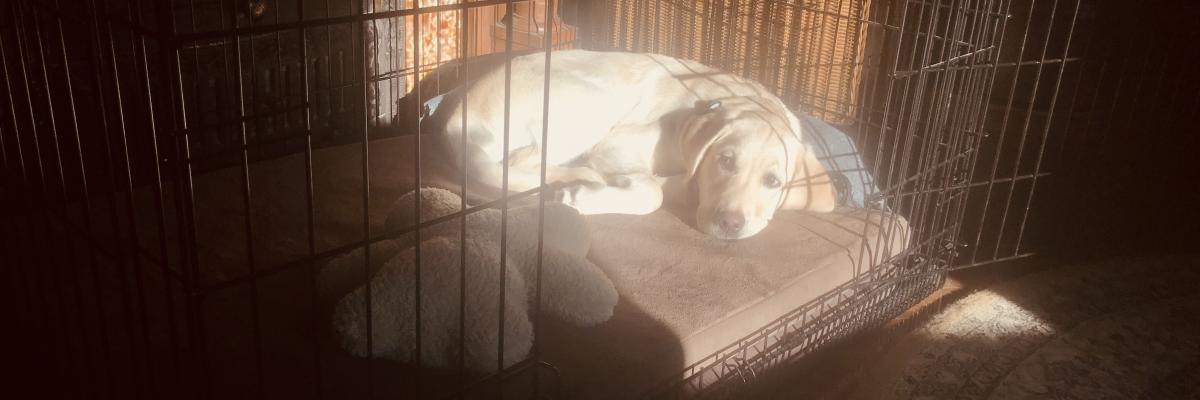By Andrea Critch, Puppy Raising Supervisor
Dogs are known as "den" animals. In a natural setting, the den is used for rearing pups and the pups quickly associate the den as a safe place to rest. In the modern world, a crate is used to simulate a den. Crate training helps puppies learn good house manners and can also promote independence.
When a crate is properly introduced, you help build confidence in a dog as it associates the crate as their safe space. It also helps with house training – a puppy does not relieve where it sleeps because they were taught from a young age to keep their "den" clean.
To start crate training, your crate should be big enough for a puppy to enter, turn around and lay down. Use a divider if you have a large crate. Ensure the crate isn’t too big, as the dog may use the extra space as a relief area. There are two different types of crates – wire or plastic. Choose the option that works best for you, and know that the wire crates usually come with a divider, so the crate can grow with your puppy.
Open the crate door and sit in front of it with your pup. Throw kibble into the crate and the pup will enter the crate to get the kibble and come out. Praise them for this and use a command – "go to bed", "kennel", "crate" etc. As they become more comfortable with the crate, try closing the door after they go in for a few seconds and shortly after, let them back out. Make sure the pup comes out of the crate calmly and does not run out.
Tips for crate training:
- don't force a puppy into the crate
- cover the crate to create a den
- have a blanket or bed to make it more comfortable
- never leave a collar or leash on the dog while s/he is in the crate – this is a safety hazard
- use a command for going into the crate
- never let a dog out of the crate when they are barking or whining
- provide them with a Kong toy to relieve boredom
- the puppy should remain calm until the door is opened
- never use the crate for punishment
